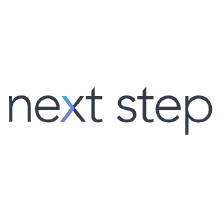

As we approach CHARGE North America (18-19 May), we’ve been asking our top speakers and partners to reveal their approach to branding in energy. In this article, we speak to Shirin Oreizy, Founder and CEO, Next Step
1. What do you think are the main communications challenges for energy companies?
The challenge in designing and marketing energy brands is that we have a tendency to think like economists, meaning we assume our users are always rational. And if we simply give them more information about the features and benefits of our solutions or more choices in our product, they’ll make the optimal decision.
We are marketing in the digital era but have forgotten that our users still rely on a brain that hasn’t changed in 200,000 years.
2. How much emphasis do you place on emotion versus rationality when building an energy brand? Does “feeling” and emotive resonance have a place within your brand strategy?
As Behavioral Scientists we take into account that people’s emotions, their environment (both digital + physical), and social factors heavily influence their decisions. Sometimes we are perfectly rational like Spock, but oftentimes we’re not. We have biases and take mental shortcuts that make us irrational like Homer Simpson.
Our Behavioral Science researchers give our clients insights to their customers’ hidden decision-making processes using our Science of DesignTM research methodology. We rely on data, and research to quantify how to build a brand strategy that can produce more predictable marketing outcomes.
3. What lessons have you learned about simplifying complex concepts/technologies for branding and communications?
We take advantage of over 300 research backed principles around how people really make decisions to design better brand and marketing communications for our clients. Of these 300 principles we find that two principles Cognitive Fluency and Working Memory are table stakes. Cognitive fluency research shows that simple language and design requires less mental work, thereby removing friction from the decision making process. Working Memory research shows the average adult brain can hold 5 to 9 chunks of information at a time. Using just these two principles we’ve been able to generate conversion improvements anywhere from 30% to 300% for brands.
4. How does a brand, reputation or storytelling approach differ between your B2B and B2C strategies?
Most B2C marketers understand the importance of emotions in marketing but oftentimes we think B2B decisions are made completely rationally and that’s not the case. B2B purchasing decisions can be just as emotional as B2C. You can’t sell to a company; you’re selling to people in a company. In B2B, there are more stakeholders involved in the purchase process and therefore more complexity in influencing the decision making process. In B2C, you’re spending your own money vs in B2B, you’re spending someone else’s money. Decisions we make when we choose B2B companies to work with can cause us to be fired, promoted, etc.
5. What advice would you leave brand and marketing leaders for 2023/24?
In today’s landscape of economic uncertainty, where marketers are faced with budget cuts and limited resources, they need a more predictable framework for producing marketing results and showing ROI on marketing spend. A research backed approach to marketing helps marketing leaders quantify what is working vs. going with your gut. Which gives you the ability to get executive buy-in for important projects.
Also, marketers have to shift their strategies to fulfill the psychological needs of their customers. Some of these psychological needs, include:
- Need For Structure: Build clarity and certainty, avoid solution aversion, and customer experience
- Need For Connection: Start with care, and leverage social community cues
- Need For Positive Emotions: Make clients feel good about themselves, provide bursts of joy, and general calm
Next Step’s expertise is the application of Behavioral Science to drive marketing strategy and campaigns aligned with how people make decisions. We call it the “Science of Design.” Next Step Behavioral Science researchers give clients insights to their customers’ hidden decision-making processes. They rely on data, not instinct and jingles. Their clients typically see conversion rate increases anywhere from 30% to 300%.
Next Step are frequently asked to present their insights at Stanford University, NYU, TechCrunch, AMA, and Global Experience Summit. They’ve spoken alongside top Behavioral Science researchers and marketers from world-class organizations like Ogilvy, Airbnb, and Uber. Our work is regularly featured in Forbes, INC., and Huffington Post. Bonus: They’ve won Stevie Awards for most innovative marketing campaigns.

